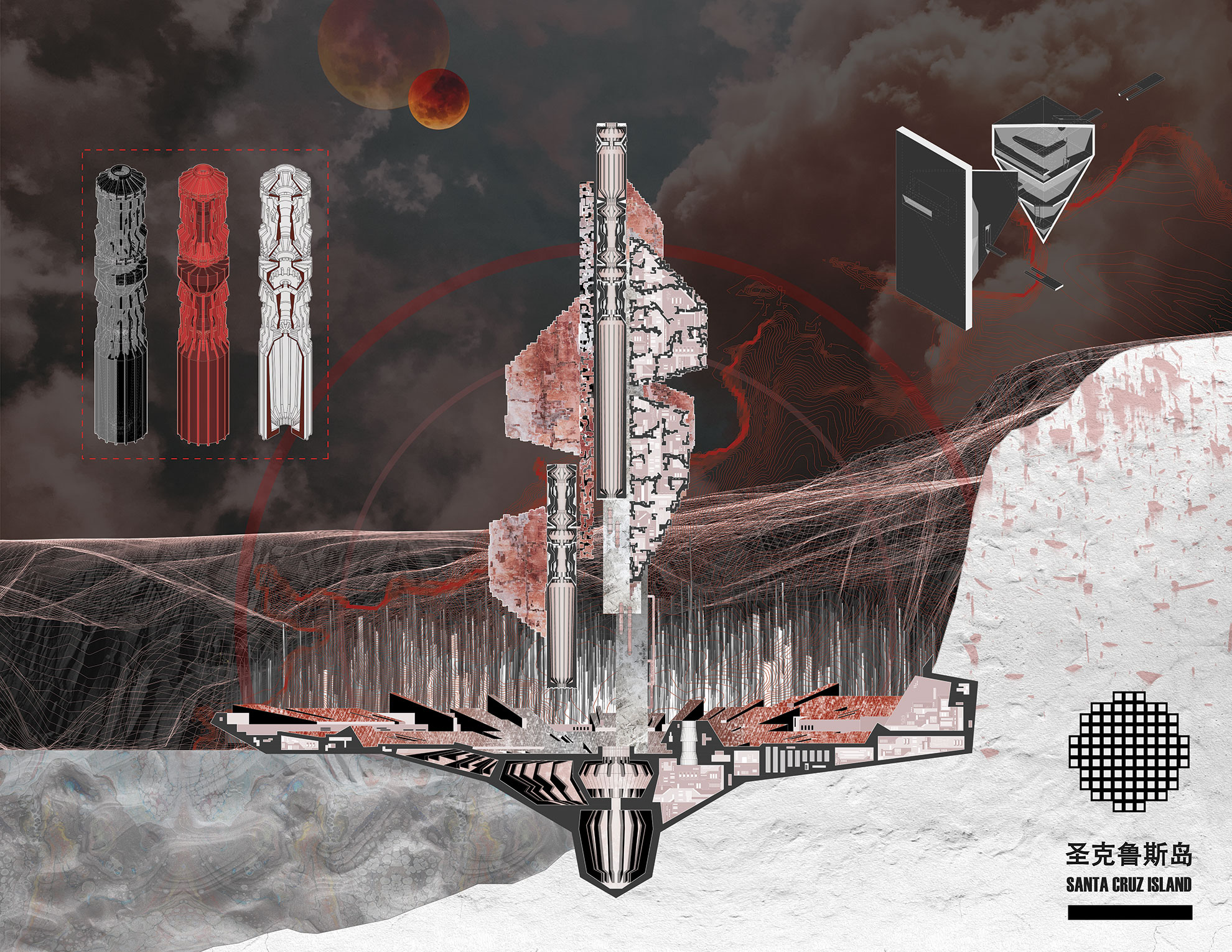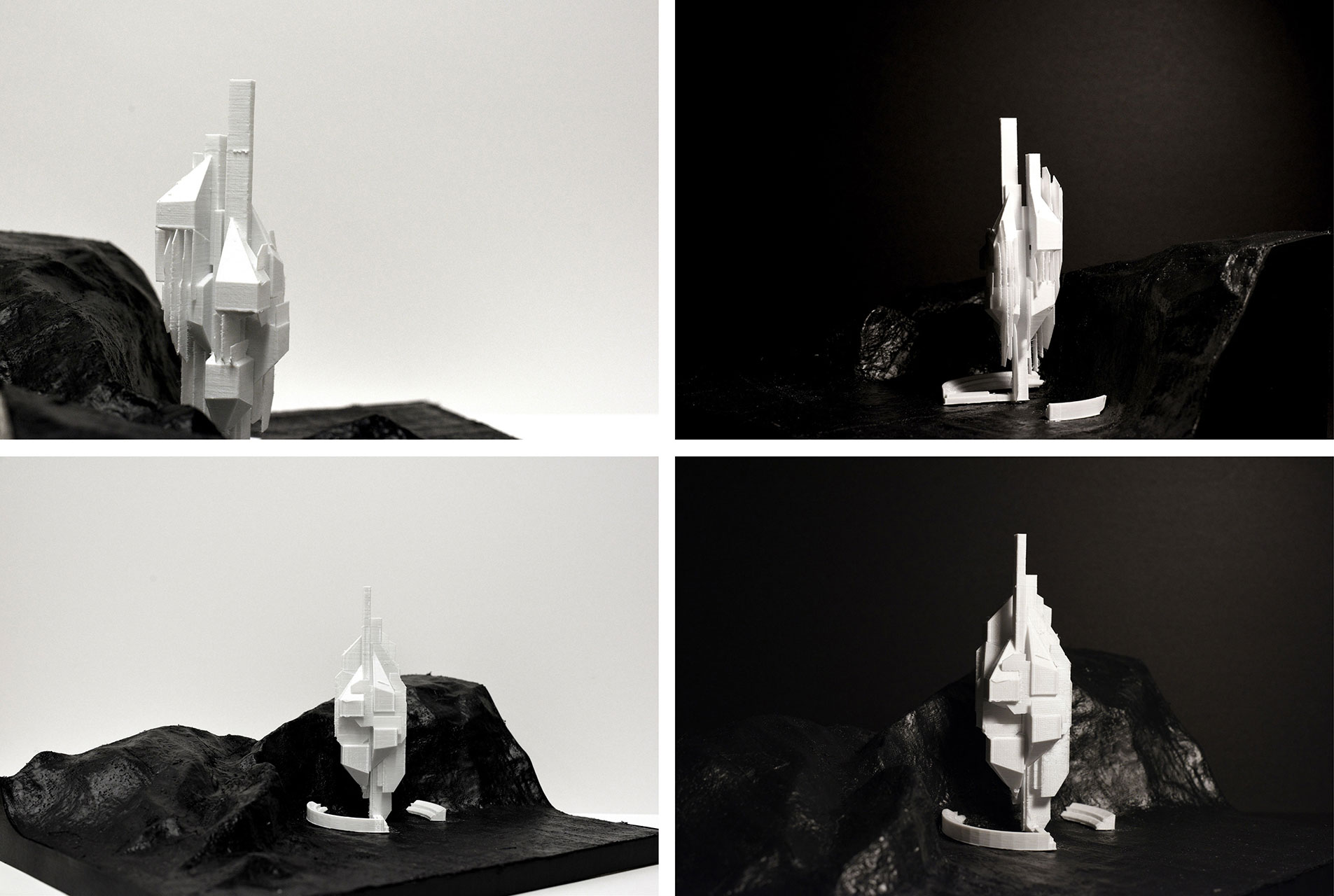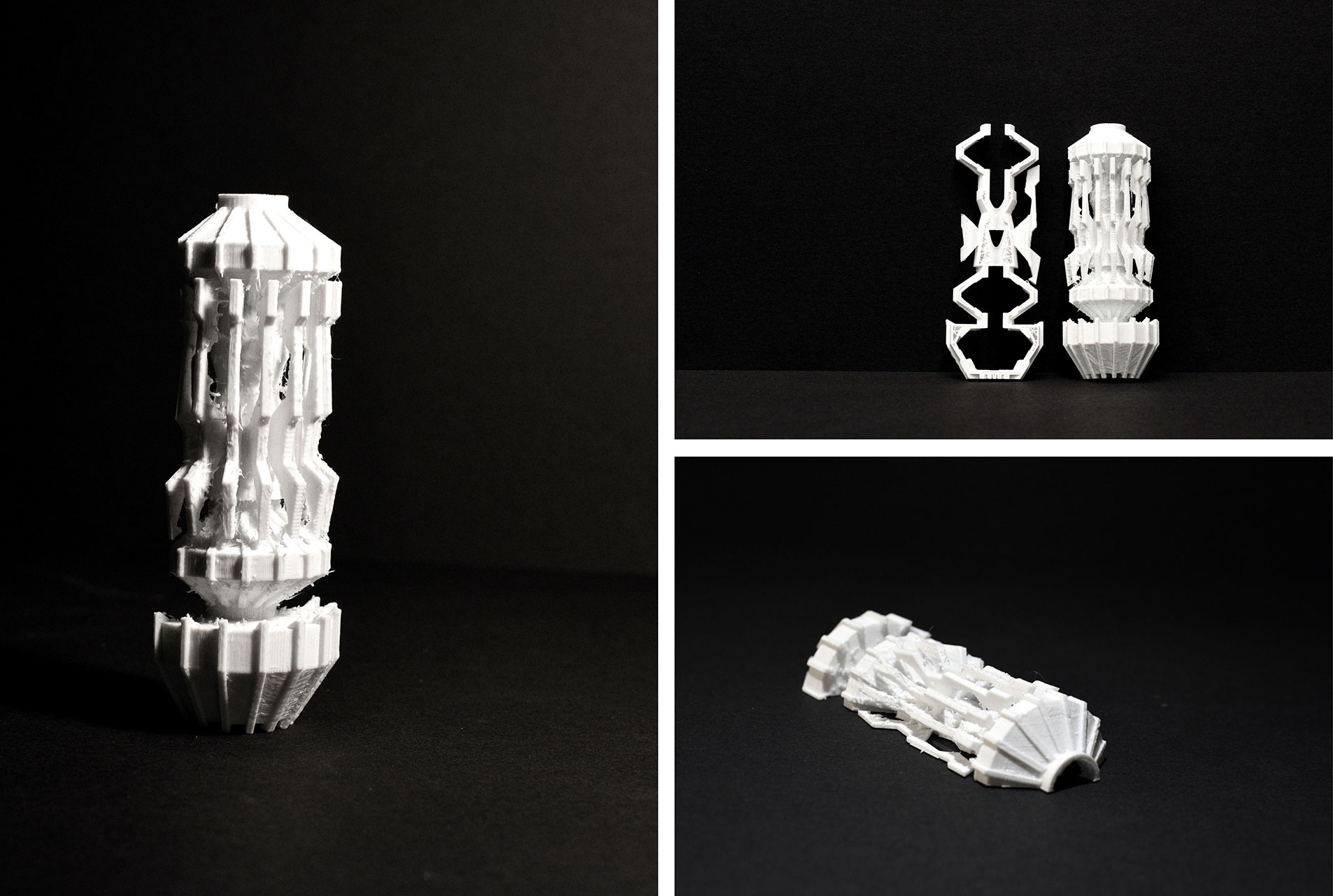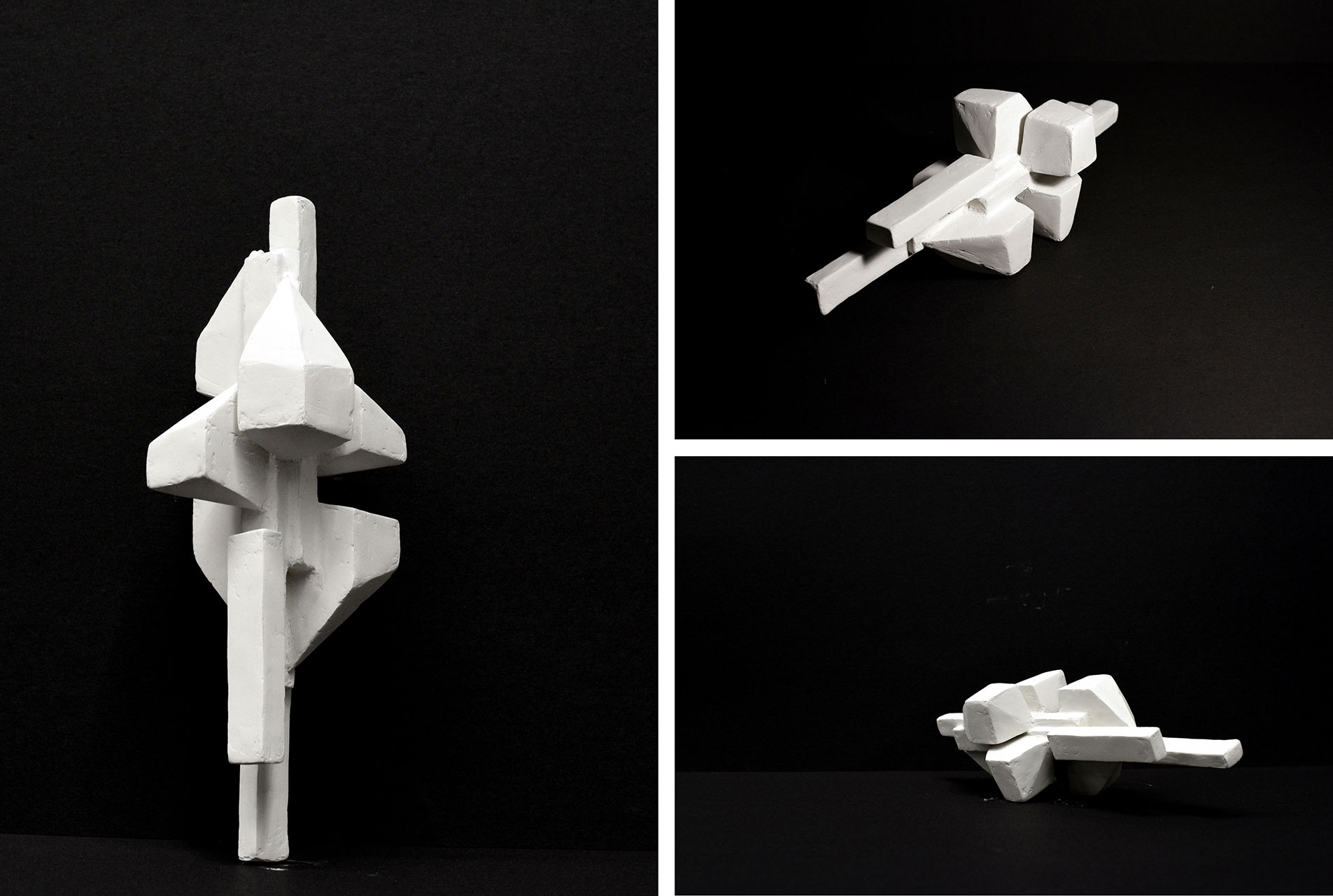SANTA CRUZ ISLAND
GRADUATE THESIS PART I
UC BERKELEY, MArch STUDIO ONE 2019
What is architecture? Shall I join Vitruvius defining it as the art of building? Indeed, no, for there is a flagrant error in this definition. Vitruvius mistakes the effect for the cause. In order to execute, it is first necessary to conceive. Our earliest ancestors built their shelters only when they had a picture of them in their minds. It is this product of the mind, this product of creation that constitutes architecture.
— Etienne-Louis Boulée, Architecture, essai sur l’art, 1788-99
UC BERKELEY, MArch STUDIO ONE 2019
What is architecture? Shall I join Vitruvius defining it as the art of building? Indeed, no, for there is a flagrant error in this definition. Vitruvius mistakes the effect for the cause. In order to execute, it is first necessary to conceive. Our earliest ancestors built their shelters only when they had a picture of them in their minds. It is this product of the mind, this product of creation that constitutes architecture.
— Etienne-Louis Boulée, Architecture, essai sur l’art, 1788-99
Studio One, the one-year Master's program in advanced design of UC Berkeley's College of Environmental Design and lead by Nicholas de Monchaux and Geoff Manaugh for the academic year 2018-2019, focused on imagining a particular set of futures for this remarkable Californian landscape. Throughout the year, the students developed architectural scenarios in an attempt to highlight and explore the limits of some of the qualities that ultimately render California a design project: cutting-edge industrial design, the global cinematic imagination, unparalleled demographic integration, agricultural innovation, adaptive infrastructure, and the effects and risks of climate change.
The following is the product of a series of exercises from the Studio One Manual.
EXHIBITED IN
DEEP CITY: Climate change, democracy and the digital at
The Rolex Learning Center
EPFL Architecture in Lausanne
The University of Hong Kong
Singapore University of Technology and Design
2021
https://deepcity.ch
FUTURE READY: Survival Now + Next at
The Anchorage Museum, Eklutna Dena’ina, Alaska
2020
https://www.anchoragemuseum.org/major-projects/projects/future-ready/submissions/arine-aprahamian/

As a result of the 2038 Calexit (a.k.a. Caleavefornia), California is separated from neighboring states by a water body to accentuate this separation.
CALEXIT/ CALEAVEFORNIA
Rising water levels have made the vast majority of the coast of California uninhabitable. Traditional methods of construction such as wood have become obsolete as those structures cannot withstand the harsh weather conditions triggered by the warming of the planet.
As fresh water is extremely scarce, giant desalination plants have emerged on the coast, which keep California “afloat” even when surrounding states suffer from fresh water shortage.
In collaboration with the Global People's Republic of China, a new housing project has been introduced, as the first of many prototypes of its kind, on the Island of Santa Cruz about 70 miles west of where the now flooded Los Angeles used to be. Its location ideal for fairly controlled sea conditions, the desalinator pumps thousands of gallons of water per day and produces fresh water through a process called advanced capacitive deionization.
The technology is based on ion electrosorption, which not only removes salts and heavy metals from the water, but also generates energy from emissions present in the water as ions, turning excess heat from the process into electricity.



The excess salt sludge from the desalination plant that would have otherwise poisoned coastal ecosystems in concentrated doses, is then altered and used as raw construction material not only for the expansion of the plant itself, but also for a growing demand of housing.
The plant thus grows organically: the more it desalinates, the more it generates construction material for housing and fresh water: two essential elements for rapid self sufficient urbanization.
The plant thus grows organically: the more it desalinates, the more it generates construction material for housing and fresh water: two essential elements for rapid self sufficient urbanization.





